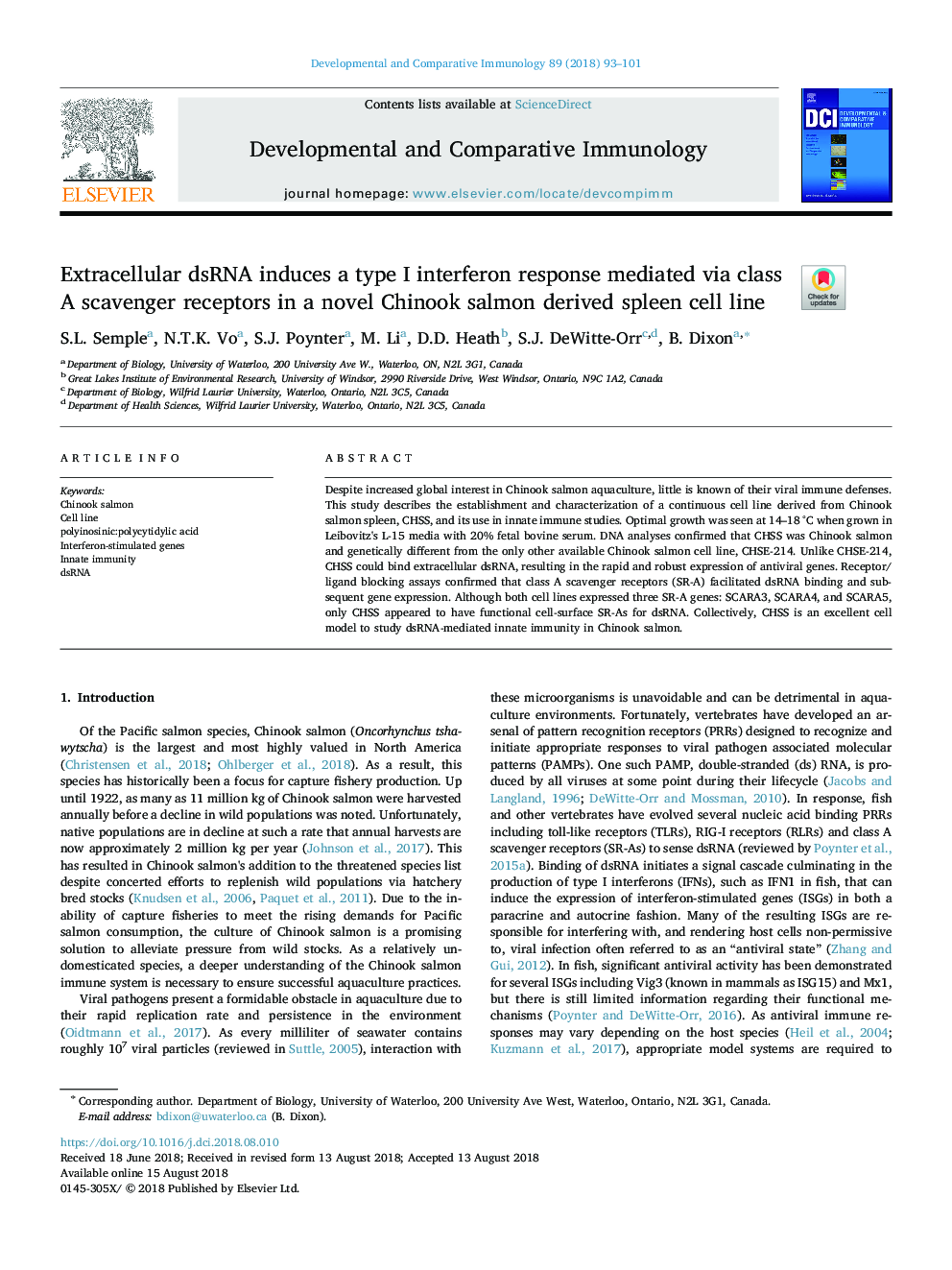| Article ID | Journal | Published Year | Pages | File Type |
|---|---|---|---|---|
| 8497598 | Developmental & Comparative Immunology | 2018 | 9 Pages |
Abstract
Despite increased global interest in Chinook salmon aquaculture, little is known of their viral immune defenses. This study describes the establishment and characterization of a continuous cell line derived from Chinook salmon spleen, CHSS, and its use in innate immune studies. Optimal growth was seen at 14-18â¯Â°C when grown in Leibovitz's L-15 media with 20% fetal bovine serum. DNA analyses confirmed that CHSS was Chinook salmon and genetically different from the only other available Chinook salmon cell line, CHSE-214. Unlike CHSE-214, CHSS could bind extracellular dsRNA, resulting in the rapid and robust expression of antiviral genes. Receptor/ligand blocking assays confirmed that class A scavenger receptors (SR-A) facilitated dsRNA binding and subsequent gene expression. Although both cell lines expressed three SR-A genes: SCARA3, SCARA4, and SCARA5, only CHSS appeared to have functional cell-surface SR-As for dsRNA. Collectively, CHSS is an excellent cell model to study dsRNA-mediated innate immunity in Chinook salmon.
Keywords
Related Topics
Life Sciences
Biochemistry, Genetics and Molecular Biology
Developmental Biology
Authors
S.L. Semple, N.T.K. Vo, S.J. Poynter, M. Li, D.D. Heath, S.J. DeWitte-Orr, B. Dixon,
